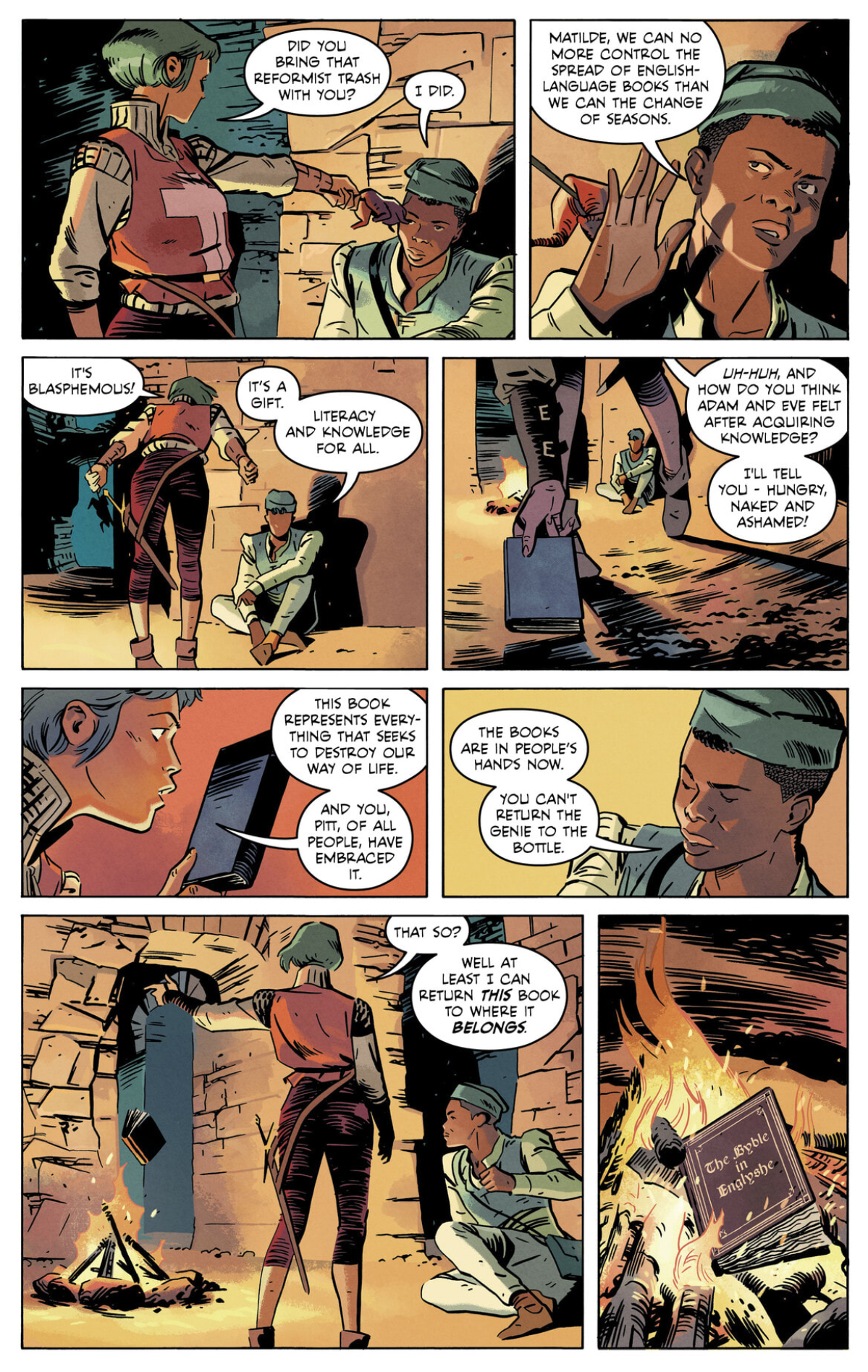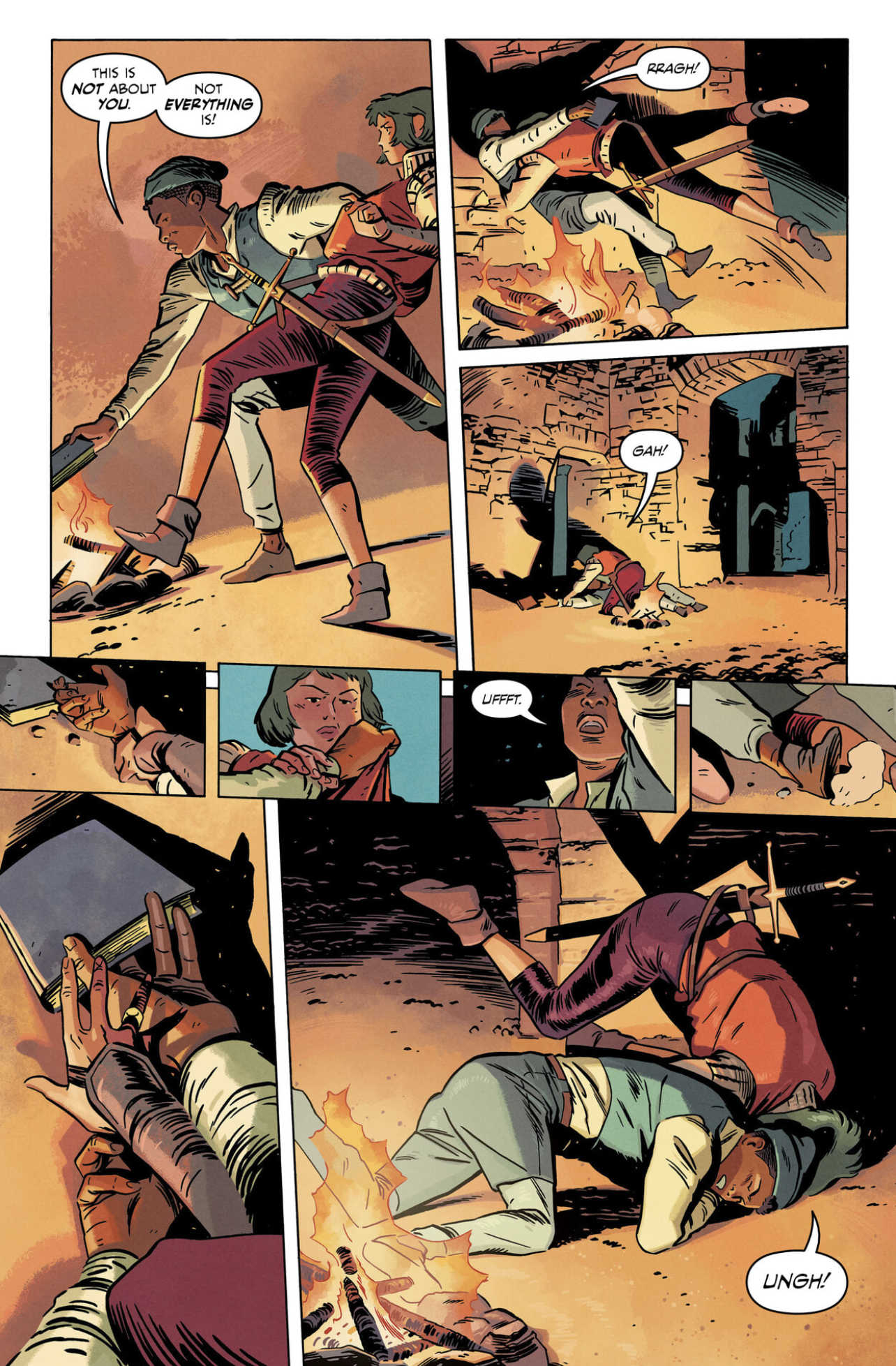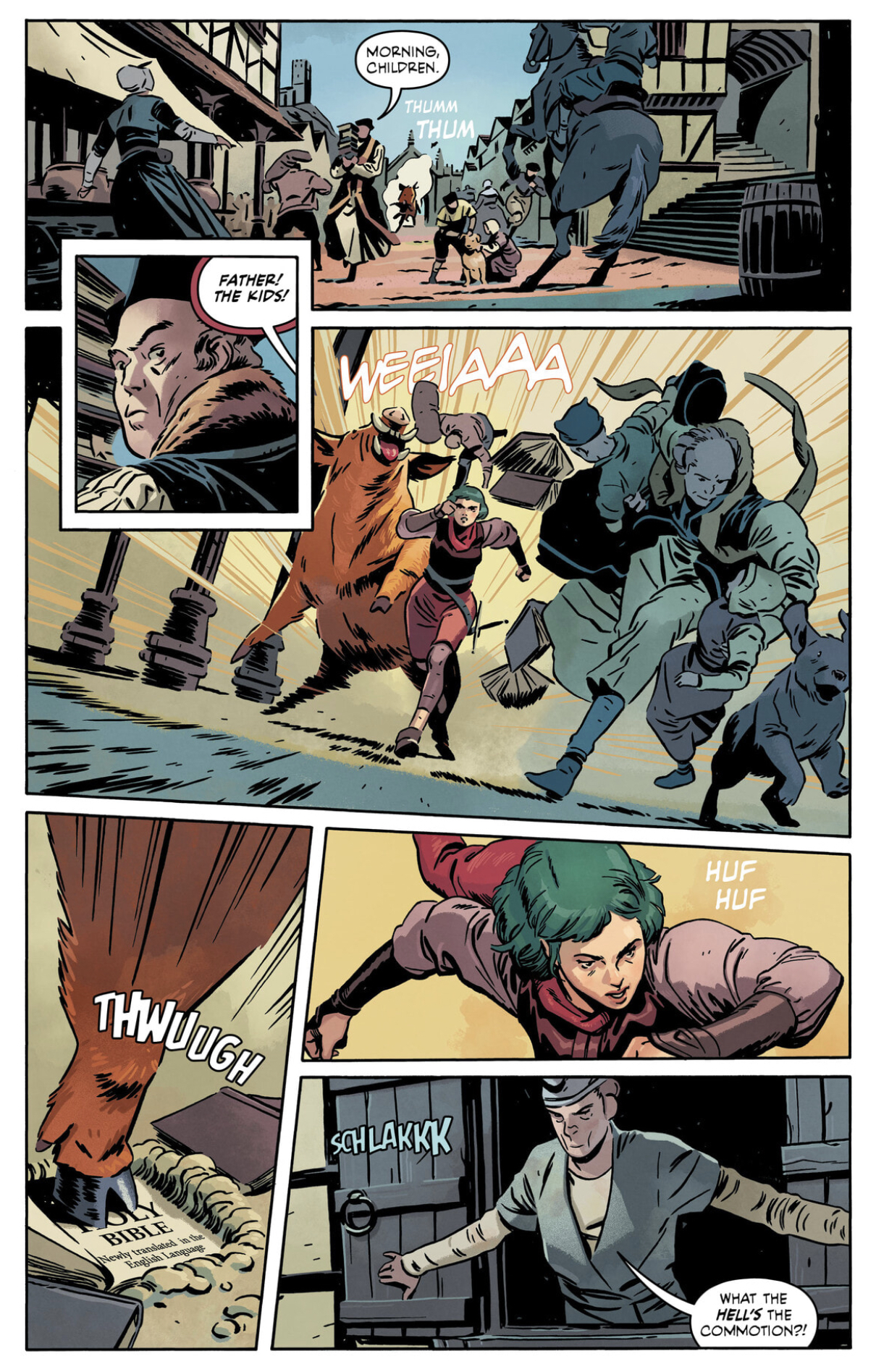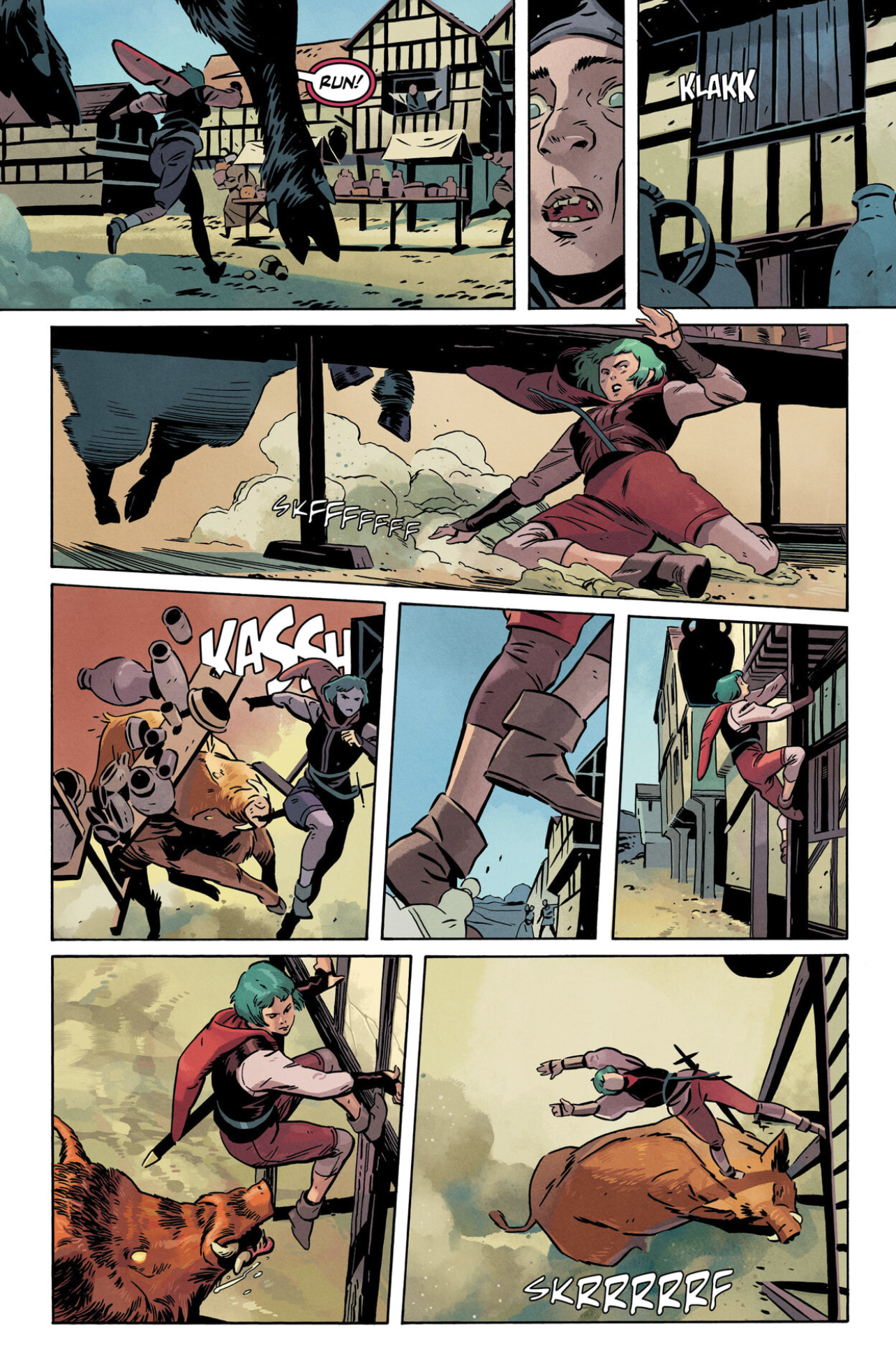It is perhaps some manner of consolation to imagine that contemporary political controversies shall appear as quaint to the world 500 years hence as the circumstances of 16th century England do to us, today. It’s not an easy matter to render these stakes legible for modern audiences, for those brave souls who endeavor to bring the ancient arguments to life.
Let’s begin with Henry VIII - if you recall, he initiated the English chapter of the Protestant Reformation not out of conviction but convenience. Henry’s story remains famous, at least in part because his motivations and means were recognizably human: vulgar and venal in equal measure. They still make TV shows about it. The problem is that his rather banal dynastic power grab had to then be interpreted by a whole country of other people, many of whom maintained a decidedly less transactional relationship to their religion. The Catholic Church had formed the bedrock of peoples’ lives for a millennium, until the day those people were told it was no longer fit for purposes. It is often hard to tell, even with five centuries' remove, where the institutional power grab ended and necessary reform began. Given the circumstances, it's not hard to blame the country for going a little crazy. And of course, there was also the small matter of the Bible itself, freshly translated into English and suddenly circulating across the countryside. It wasn’t the first time someone had translated the Bible into the English vernacular, mind. The first time had started a civil war, so as you can imagine the authorities were touchy on the subject. Given everything else going on.

This is the context behind the adventure in Gospel, a recently-concluded five issue mini from Image, written and drawn by Mr. Will Morris. (Not the socialist founder of the Arts and Crafts movement, that’s another story entirely.) The conflicts in Gospel arise naturally from this context, the characters within the story at turns overwhelmed and confused by circumstances which were, in truth, overwhelming and confusing. To Morris’ credit, there’s no attempt made to contemporize these dilemmas. The transformation of the English church was a dangerous period in which most normal people spent their time trying very hard not to be crushed by baffling cosmic forces. In that regard, at least, we can relate, even if recondite questions of doctrine and interpretation may seem more remote.
The story is not without some degree of anachronism, for all its thorough historic place-setting. For one thing, our heroine Matilde has a shock of green hair - a sign, certainly, of some manner of otherworldly provenance. For another, our heroine is a heroine, a young woman dedicated to serving the role of heroic adventure in a time during which women’s roles were decidedly more circumscribed. The story is aware of this, just as it's aware that the only industry actually open to women at that period was high-end textiles. That was a constant since the time of Chaucer. The medieval lingered like a hangover over much of the island well into what we regard as the Renaissance period - indeed, it almost seems at times as if England in history skips the Renaissance entirely on the way to the Enlightenment, with all the requisite social upheaval entailed by hurrying to catch up with the continent.
If all this sounds a bit dry - well, ok. It’s a bit dry. Although a few liberties are taken, they are conscious liberties, made by an author who in most ways appears scrupulously aware of period detail. In Morris we find a scrupulous talent indeed. His buildings are solid. His clothing sumptuous.
Morris was new to me before I picked this title off the shelf and flipped through for the first time. It took no longer than a brief perusal to ascertain that, yes, this random Image book appeared to have some of the most absolutely revelatory art I’d seen in years. Just page after page of clean, tight drawing, with loving attention paid to every period detail. This is impossibly good work. Pure virtuosity on display with every turn of the page.
That’s what really got me about Gospel, I must admit - it landed in my hands like a thunderclap. Out of the blue, with no fanfare whatsoever, the most absurdly confident comic book art simply appears. A giant enters our midst, all in a moment. Truth be told, Morris draws more than a little like Paul Smith, to my eye. With perhaps a bit of Mark Buckingham. His figures are sleek, his lines organic. It’s very easy art to look at. The action—and there are actually a number of action sequences, it’s a fairly action-packed book despite the heady historical pedigree— reads like silk sheets. Smooth as shit.
And the story lingers in the memory. It doesn’t stray from its commitment to Matilde being rather bad at her job - her job being parish hero of Rumpstead. Another ingratiating virtue: the story doesn’t take itself too seriously, but never veers outright into parody. “Rumpstead” is an evocative name for a town in the middle of nowhere, funny enough to fade into the background without quite bringing attention to itself. Just a little giggle, not enough to break the effect - just as how Matilde aspires to heroism, yet we see her mugged halfway through the story. Humiliating circumstances, yes. Why is she even carrying that sword? Well, she wants to be Joan of Arc. A thoroughly terrible career role model for anyone, considering that in addition to being very young, dear Joan was also both 1) a soldier and 2) a martyr. Matilde merely wants to be famous. When a fire-stoking demon appears in the middle of her town she couldn’t be more engaged in the fight against the forces of evil, ready and willing to set off on a quest for holy relics that promises ample opportunity for derring-do. The very stuff of myths and legend.
It’s that very lust for fame that serves as her most relatable character trait. She wants to be a famous hero whose stories are told and retold in taverns across the countryside, when in actuality that transparent desire merely makes her easy to manipulate. Turns out, when all you care about is winning glory you make yourself gullible and credulous, a ready tool for the forces of evil. So too with Matilde, who likes to imagine herself a swashbuckling hero of legend though she manages to get hit on the head more than occasionally while doing the bidding of men she shouldn’t trust. Much like Hal Jordan, even down to the emerald accessorizing. Unlike Hal Jordan, she manages to see through the sinister men in robes using her industrious credulity to enforce revanchist notions of religious hierarchy. Just in time for the story’s rousing conclusion, worry not.
It’s been a pretty good stretch for Image comics - why, just in the past few months here we’ve looked at the likes of StarHenge, Seven Sons, 20th Century Men, even Erik Larsen’s latest career resurgence in the pages of Ant. That’s an enviable slate all on its own, you must imagine any publisher would be happy to field that slate. Of all these books, however, no release this past year has given me such pure delight as Gospel. That it has met a mostly muted response from the comics community at large is, perhaps, to be expected - a slightly dry yet astonishingly accomplished historical adventure by a creator with no sales record is perhaps not the finest grist for the direct market mill. You honestly couldn’t design a book better suited to fly under our radars in 2023. It’s going to be out in trade in June, however, which is where I’d imagine—hope—most readers will be joining the story. Now you can slap a big pull quote from TCJ right on the cover of that bad boy and watch sales tick ever upwards. Right? Right!
Will there be more to the adventures of Matilde and her faithful scribe Pitt? I dearly hope so, there’s a great deal yet that could be shared of her charming life and tumultuous times, even as I also acknowledge the series as designed presents a satisfying whole in and of itself. Too much good work has been put into designing these characters and their world, however, such that it seems a shame to imagine them being put back on the shelf forever. A little logo on the inside front cover indicates the series was partially funded by the Scottish Lottery, an investment which in itself represents more support for the arts than anyone in my country can ever hope to see from our government. Maybe the Scots can do the world a solid and continue bankrolling these excellent, excellent comic books. Is that how it works? I hope so!
The post Gospel #1-5 appeared first on The Comics Journal.






No comments:
Post a Comment